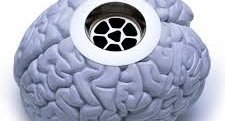They’re everywhere. Shake the tree and a dozen or so will fall out. Everyone’s a neuroscientist! But let’s not get too pre-occupied with their credentials. Let’s rather home in on what they do with their ‘credentials’.
Several years ago I was approached by a coach who was facilitating a local certification program for a ‘Big Name’ international neuroscientist-neurocoach. This ‘Big Name’ neuroscientist had recently evolved to become the director of a neuroscience INSTITUTE, specializing in the application of neuroscience in the corporate environment. I was invited to consider lecturing the neuroscience component to the students. The coach met me at my consulting suite and presented me with the ‘curriculum’ on a memory stick containing 1.2Gb of information. A review of the contents revealed a collection of most of the neuro-research that had appeared in the relevant neuroscience publications over the preceding two years. I indicated to the coach that there was apparently no application or curriculum on the memory stick. She looked at me somewhat blankly. I couldn’t discern if it was an ignorant look, a puzzled look, a shocked look or a look of persistent religious awe. So I responded: “ There is no application nor curriculum on this memory device, my dear. Only a collection of research articles. What is your average corporate individual to do with all this info?”
She continued to stare at me with the look of religious awe, but now punctuated with a slight reddening of the cheeks and a barely discernable shrug of the shoulders. Well to cut a long story short, I had to use my own program and application as a vehicle to carry over the neuroscience concepts into the corporate environment for someone else’s certification course. Interestingly, this Big Name neuroscientist was lambasted in the Australian press a short time later, for inflicting unusable and inapplicable neuroscience stuff upon corporate Australia. You see folks it’s a classical case of ‘bullshit baffles brains’!
So here follows my concise neuroscience handout based on some validated neuroscience info and an application to boot. If it works for you, great. If not, well just hit the delete button. The processes which I’m about to describe take place in the only brain that we have, the organ that sits in the cranium between your ears. Do not believe in the ‘fake news’ that there’s also a brain in your heart and one in your bowels. The definition of a brain is a cognitive organ incorporating motor, sensory and emotional circuitry. When you damage your heart, you don’t lose cognitive function. Emotionally, you may at most experience a temporary low. Similarly if we resect parts of your bowel we don’t interfere with your thought processes!
Ultimately life is a tussel between two brain centres – the dopamine producing nucleus accumbens (NA) and adrenaline-cortisol producing amygdala (Amyg). The NA supports the functions of reward gratification, purpose, curiosity and achievement. The Amyg is about fear, anxiety and anger. These two centers work in opposition to each other such that gratification, purpose etc suppress fear, anxiety and anger. Conversely, fear anxiety and anger suppress gratification, purpose etc. The preponderance of each is determined by the unique nurture dynamics – the more nurture reward experienced, the more NA; the more deprivation, the more Amyg. The function of each is also a reflection of life circumstances – low NA is associated with hopelessness and purposelessness while increase Amyg is associated with fear and anger. The brain requires a threshold level of NA activity. If not forthcoming, it induces compensatory behavior that increase dopamine – excessive eating, drinking, exercise, sex, drugs and the like. Yes you guessed it, the addictions.
There are two other brain areas which suppress Amyg activity – the cingular gyrus (oxytocin stimulating), the seat of empathy, trust and belief and the pre-frontal cortex, the seat of higher reasoning. So it’s potentially three against one to secure a gratifying existence versus fear and anger – the gratification and purposefulness of the NA; the oxytocin stimulating cingular gyrus and the reasoning ability of the pre-frontal cortex which cognitively modulates extreme fear, anxiety and anger.
This dynamic becomes critical when we recognize the effects this neurophysiology has on our immune system. The low NA, high Amyg state of fearful hopeless-helplessness suppresses our immunity and stimulates inflammation in any potential target area. This lays us open to arthritis, inflammatory bowel disease, cardio-vascular illnesses, neuro-degenerative illnesses and cancer. The high NA, low Amyg configuration is wellness-enhancing.
So when all is said and done, where to from here? Simple ….
- Strive
to be curious by engaging with the greater environment. This is easily
achievable by periodically stopping to really ‘smell the roses’. Run a
checklist, a personal mission statement, to gain focus of meaningful and
personally gratifying life interests and environments. Engage! - Attempt
to really see, hear and read without distraction or judgment. - Reason
and validate information on a broad base – don’t get stuck in a narrow
context or be hijacked by ‘fake news’ or negative emotions. - When
something unfortunate happens to others, stop for a moment, really listen
to them and put yourself in their shoes. And perhaps feel for a
short while what it’s like to be them at that moment. - Remind
yourself of your own blessings, talents and successes.
Finally remember that none of us had any say in what gave rise to who we became and none of us really have that much control over what becomes of us in the greater scheme of things. We are, each one of us, a unique subjectivity which result from nature-nurture influences together with life’s multiple knocks. We make our choices based upon our subjectivity. In absolute terms then, we control very little. It’s really just a throw of the dice …
Copyright reserved – Ian Weinberg 2018


